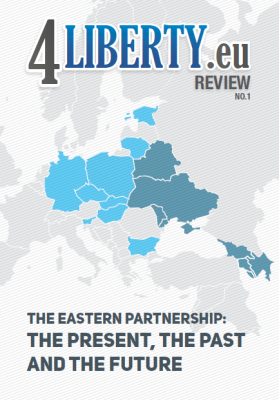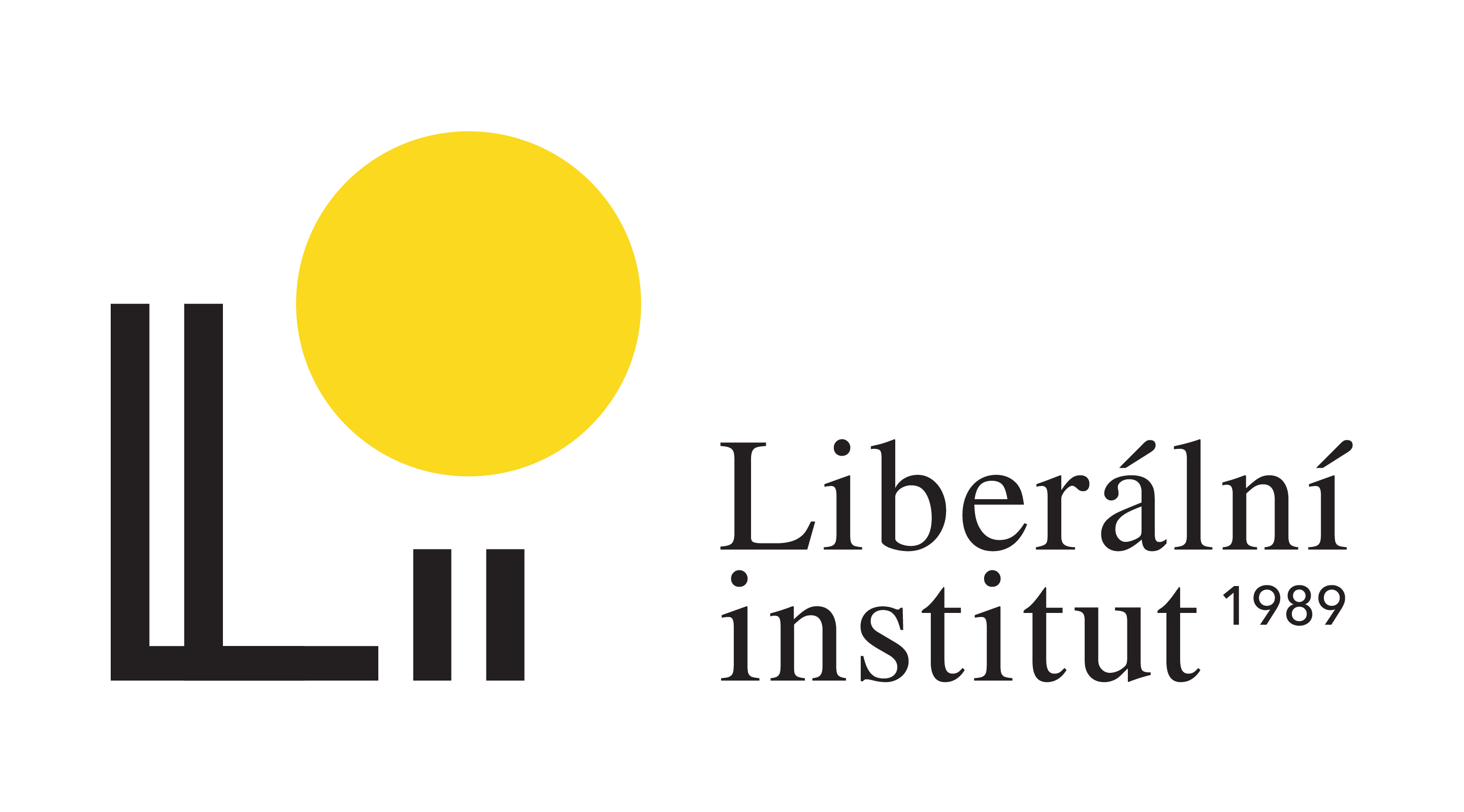
European Union as an institution has been originally, in the days of European Economic Community, conceived of as an institution promoting economic cooperation that would prevent European countries from sinking into conflicts of the likes of two World Wars. In the wake of the Cold War paradigm, the United States overtook the position of the geopolitical and foreign policy leadership until the collapse of the Soviet Union. The foreign policy agenda was taken over by the North Atlantic Treaty Organisation even though European countries have made some initiatives to push for a European defence policy and even a common army. Thus, due to the lacking need as well as the continually non-existent capacity or even legal foundation for the creation of such capacities, the early 1990s found the European Union facing the break-up of the Soviet bloc unprepared. Since the newly founded countries and regimes in the Central and Eastern Europe in the early 1990s were susceptible to turn to authoritarian tendencies, the European Union had to act quickly in the new geopolitical environment and prepare a framework, in which it would manage to handle relations with these countries and ensure their peaceful and complete transition from a planned economy and totalitarian political systems to the club of modern democracies with a market economy and a stable social system. The result was an incorporation of these countries in the European Union.
In the mid-2000s when the Central and Eastern European bloc of countries joined the EU in two waves, Europe found itself facing new challenges on its outskirts and realised the need to assert its influence in these countries. The main areas in mind were the Mediterranean region, Turkey, Caucasus countries and Ukraine and Belarus in the East. All of the mentioned regions and countries lie in the borders of the European Union and present a potential area of development for the EU and its influence abroad. European Union was particularly concerned by the development in the Ukraine and the Caucasus countries, which have seen more problematic struggles in the path either towards the establishment of functioning democratic processes with a market economy or even in some of the basic aspects of transformation for an authoritarian regime. The Orange revolution in the Ukraine and similar attempts in other countries of the region (namely Georgia with the Rose Revolution in 2003, but also the opposition protests in Belarus) sent out a clear signal to the European countries that there is a need for a consolidated effort to help the pro-European voices in the individual counties.
Eastern Partnership
That is why European Union tried to promote its position in the Ukraine, Belarus and the Caucasus region by the foundation of the Eastern Partnership, which was inaugurated by the European Union on 7th May 2009 in Prague. The Eastern Partnership was set out to improve political and economic trade relations with six post-Soviet states, namely Ukraine, Belarus, Moldova, Georgia, Armenia and Azerbaijan in order to prepare ground for possible future membership in the European Union. This article is an attempt to analyse the Eastern Partnership as a form of European foreign policy in the context of an overall foreign policy strategy of the EU as well as the basic aims and methods applied in this particular case from the perspective of efficiency in terms of achieving the set goals. This is critical in order to better evaluate the usefulness of the partnership as an effective means of promoting positive change in the wake of the current events unfolding for example in Ukraine, which may require a revaluation of this policy going forward.
In the beginning, the main goal of the Eastern Partnership was to create economic and political transformation of the mentioned countries into fully functioning market economies with stable democratic institution and constitutional checks and balances protecting the citizens of these countries from the arbitrary abuse of government power. Obviously, from the outset this was a different mission than the one with the Visegrad or Baltic countries over a decade before. While there were some difficulties in the democratic and economic transformation in case of the Central European countries, as could be seen in the case of Mečiar government in Slovakia between 1994 and 1998, the general transformation to democratic principles was never threatened in terms of challenges to the basic constitutional principles. Moreover, Ukraine, Belarus and the Baltic countries are positioned directly in a traditional sphere of Russian influence, not just in terms of economic interests, but also in terms of basic security concerns that the Russian Federation tried to overcome by having a layer of countries around itself, which it could view as economic and geopolitical allies acting in accordance with Russian interests. Ukraine, Belarus or the Caucasus countries found themselves between the two economic and political actors that were struggling to impose their vision on the region.
From this perspective, the purpose of this article is to then compare this measure to other forms of initiatives that the EU pursued over the past couple of decades. Since it could be argued that the most effective way for the EU to conduct its foreign policy was the offer of the EU membership through a system of conditions given to the applicant state, it is necessary to evaluate the efficiency of missions that had a different set of aims and relations, at least in the short run. Since the Eastern Partnership could not offer a direct membership, but only a distinct step up in the relations with the European Union leading to the possible ratification of the Association Agreement, the arrangement of the relationship could matter tremendously if the mission was to be successful in achieving the gradual improvement in the cooperation between the European Union and the respective countries. This could be particularly topical for the case of Ukraine, which was offered an accession agreement only in 2013 and so the impact of the Eastern Partnership could be evaluated as a program to precede the later establishment of accession talks.
Historical development of the EU’s foreign policy
In order to fully grasp the nature of this foreign policy initiatives of the European Union it is necessary to understand that the foreign policy dimension of the European Union only appeared in the overall picture of the European Union’s policies as a result of the pillar system of the European Union stemming from the Treaty of Maastricht in 1993. It established the Common Foreign and Security Policy (CFSP) as the second pillar of the European Union, which was to be governed by the principle of intergovernmentalism, which required an agreement between the governments of individual member states of the European Union. It is for this reason that the CFSP pillar together with the third pillar focusing on the cooperation in the area of Police and Judicial Co-operation were developing on an insufficient level, from the point of view of the overall process of European integration. This was especially true with respect to the new challenges facing the European Union on a much more global scale, particularly in the context of the terrorist attacks on the World Trade Centre and the Pentagon on the September 11, 2001. The response by the United States in the form of military operations in Afghanistan and Iraq found the European countries split right down the middle with some countries actively involved in the operations, while other ones actively criticising the United States for these measures. European Union faced similar weakness in terms of influencing other geopolitically important conflicts such as the conflict in Israel and the escalations of the tensions with Iran.
It is for this reason that the European Union sought to increase its capacities to act on both local and global scales. The first step in the transformation was supposed to cover the legal foundation necessary to increase the efficiency of the EU institutions. The first significant step forward was supposed to be the introduction of the European constitution, which was seeking to create a unified position of a Foreign Minister of the European Union. However, this was prevented by the referenda in France and Netherlands, where the citizens of these two countries voted against the introduction of the new treaty, and thus rejected with it the establishment of a unified position that would represent the entire European Union in all its diversity, and more importantly have the power to act in their name and effectively be a partner to global actors, such as the United States, Russia, China or India. This was then later substituted with the Lisbon Treaty in 2009, which was supposed to create a position of the President of the European Council and the High Representative of the Union for Foreign Affairs and Security Policy. However, this was proven to be a compromise that was not sufficient to bring satisfactory prominence to the European Union as a single foreign policy actor.
The European Neighbourhood Policy
It was within this context that the European Union developed the foreign policy initiatives that were aimed at the neighbouring regions. Overall, the policy was spearheaded under the name of the European Neighbourhood Policy. It aims at providing a chance to countries lying on the outskirts of the European Union to develop political and economic institutions that would enable the European Union to offer them the Accession Agreement. It was designed as a tool to improve the situation at the EU’s Eastern and Southern borders, excluding Russia, for which a separate approach has been developed. The program declares the maximum support for the countries involved in order to reach the European standards when it comes to finances, economy and politics. This support is directed towards the promotion of basic European values. As it was pointed out earlier, perhaps the main distinction compared to the previous case of the CEE countries in the case of the European Neighbourhood Policy and more specifically the Eastern Partnership the European Union used financial support as the main incentive for the introduction of many structural reforms as opposed to the direct membership prospect. However, as it will be shown later, often these financial advantages were insufficient compared to counterincentives that these countries had to resist due to the transformations.
Union for the Mediterranean
Overall, the Neighbourhood Policy had two dimensions. The first one that could be viewed as more robust, both in terms of the size of the program and the level of involvement, was the Euro-Mediterranean Partnership (EUROMED), which has been promoting economic and political reforms across sixteen countries in the Southern neighbourhood of the EU in the North Africa and the Middle East. Previously known as the Barcelona Process, the Union for the Mediterranean (UfM) posed an opportunity to restart the relations in a more concrete and visible way as a result of the commencement of new regional and sub-regional projects that would have real impacts on the people inhabiting those countries and regions. The main areas of these projects were economy, environment, energy, health, culture and migration. The countries that are officially a part of this Union are: Albania, Algeria, Bosnia and Herzegovina, Egypt, Israel, Jordan, Lebanon, Mauritania, Monaco, Montenegro, Morocco, Palestine, Syria (suspended), Tunisia and Turkey. Looking at this arrangement we can see that institutionally the UfM has been organised relatively weakly, and is primarily based on regular meetings that are currently co-presided by one EU member state and one member of the UfM. In addition, since 2010 there has been a functional secretariat founded in Barcelona. It is headed by a Secretary General and six deputy secretary generals. As a result of the abovementioned Lisbon Treaty there will be a change in the institutional arrangement following the establishment of the European External Action Service (EEAS).
Currently the Union for the Mediterranean has a number of initiatives on its agenda. In general terms they focus on the environment, transport, energy, education and the cooperation of small businesses in the region. The key long-term objective of the partnership is to create a deep Euro-Mediterranean Free Trade Area, which would remove all barriers to trade and investment between the UfM and EU countries. To help achieve this end the Euro-Mediterranean Association Agreement has been signed and put in force with most of the partners. At this moment the scope of these agreements is limited to trade in goods. Further negotiations are ongoing to increase the trade to the areas of agriculture and services, acceptance of industrial products and regulatory governance in order to establish sound and comprehensive free trade areas. Through the mutual trade and economic cooperation the EU tries to achieve a common area of peace, economic prosperity and political stability in the region.
It is especially at the present time, in the direct aftermath of the political instabilities in the region of Middle East and North Africa that the EU tried to push the economic cooperation as the main tool of its foreign policy. On one hand, the EU realises that the current level of economic integration between the countries in the region is still relatively low and that in order to stabilise the political situation, it also needs to compete with other foreign interests in the region – China, for example – which has been strengthening the economic ties with Africa for the past couple of years. An example of the Free Trade initiatives in the region include the Agadir Agreement between Morocco, Tunisia, Jordan and Egypt, which came into force in 2007 and still remains open to other Arab countries. Another example with potential political implications for the region is the Free Trade Agreement signed between Israel and Jordan, which could serve as a foundation for wider economic cooperation and thus could provide a critical stabilising mechanism for the Middle Eastern region. Especially if we note that Egypt, Israel, Jordan, Lebanon, Morocco, the Palestinian Territories, Syria and Tunisia have all signed bilateral trade agreements with Turkey. The European Union tries to build up on these attempts and promote economic and social transformations.
Eastern Partnership in the context of European Neighbourhood Policy
As a result of the historical development as well as the development of the Southern dimension of the European Neighbourhood Policy, European Union intended to counterbalance the newly established Mediterranean Union and provide a second dimension of the foreign policy towards its bordering regions. It was exactly in a very similar manner that the means and the goals of this part of the ENP were defined. Similarly to the area of Southern neighbourhood, the Eastern Partnership focused initially on the improvement in the political cooperation, economic integration, transportation, energy policy and the offer of the financial reward for the pro-democratic and pro-market reforms. These reforms and the increased cooperation on all levels should ensure stability on the EU’s Eastern border, but more importantly, increase EU’s political and economic impact in the area that traditionally belonged to a sphere of influence of a world power that was seeking to reinstate its impact for economic and security reasons. The issue of geopolitical loyalty of the regimes in the Eastern borders, Ukraine, Belarus, Moldova, Armenia, Azerbaijan and Georgia, to the European values. An important aspect was the conflict in Georgia, which urged the European Union to take a politically decisive action in this matter. While the European Union seems to want to overcome the notion of the Russian sphere of influence and the EU officials claim that Russia has no right for such sphere in the neighbourhood, one must take a much more careful and closer look on the outcomes in order to judge the efficiency of such policy and plan the future steps in this region.
The question is then, whether the EU is not just trying to provide a substitute of the Russian sphere of influence with a one of its own. And while the Eastern Partnership is not focused on a military or security cooperation, the attempts done in the area of political transformation in say, Belarus or most notably Ukraine, clearly showed that the political control of the countries in this region can be of crucial importance due to many types of economic and geopolitical interests of the Russian Federation. This is often true even in the direct military aspects such as the strategic position of Sevastopol as the location of the Black Sea Fleet. This way we can view the political transformations as having direct implications for security concerns of the Russian federation. Furthermore, the energy supplies following the 2009 Russia-Ukraine gas dispute, the diversification of energy sources to Azerbaijan or Armenia could also be seen as a direct threat to its economic interests on one hand and the political leverage in these countries on the other.
By the same token, the European Union has had a similar combination of economic and security interests in mind when it pursued the project. Looking at the main results after the initiative has been in place for four years we can see that the project has been initiated with the goal that would later result in the offer of Association Agreements. These have been negotiated with Ukraine, Georgia, Armenia and Moldova, later on also with Azerbaijan. Another area of success has been the liberalisation and the facilitation of visas. Furthermore, the EU has strengthened the multilateral and sectorial dimensions of the Eastern Partnership.
However, a couple of things have become apparent in the light of the developments unfolding over the last year, particularly in Ukraine, but also in other countries, eg. Moldova or Armenia. The main lesson that can be taken out of these examples is the leverage provided by the European Union in terms of its position vis-à-vis the Russian Federation, which can offer an immediate benefit of the Customs Union with Russia or the cheaper gas prices. This situation has occurred in a number of cases and perfectly illustrates the limits in the influence the Eastern Partnership has in the face of serious political contenders. The situation in Ukraine with the political aftermath of the unseating of president Viktor Yanukovich, which was followed by the military operations and the current state of civil war are issues that the EU has little capacity to contain.
This shows that despite the initial willingness to push for political changes and the foreign policy influence in the region of the Eastern border, the European Union is not prepared to support the efforts with a serious and economically attractive offer that would counter the potential offers from Russia. More importantly, however, the EU also lacks the foreign policy capacities (military capabilities, decisiveness and the unity in terms of its voice) to back any such offer that could be used in case of large scale escalation of a conflict such as in Ukraine, or just as a negotiating tool to increase the respect from the side of major international partners such as Russia. The decision of Armenia to suspend the preparation for the Accession Agreements with the EU after the build-up of Russian pressure and the interest to join the Customs Union with Russia, Belarus and Kazakhstan was only confronted with regrets from the side of the European Union. This puts European Union and the entire Eastern Partnership initiative into a very dim light in terms of its capacity to deliver the desired ends when faced with any significant pressure from Russia.
This is especially discouraging towards any pro-European voices in the countries directly under Russian sphere of influence – it used to apply to Ukraine much more during the government of Viktor Yanukovich, and still applies most heavily in countries like Belarus and Armenia, which have been traditionally strong allies of Russia. However, if we look at the sentiments of the ordinary people, the efficiency of the Eastern Partnership to be a successful tool of foreign policy is also limited as the countries still face a strong internal split within the population, especially if there is an influential Russian minority present in the respective country.
Path ahead
In order to change the fortunes of the European Union a number of things should be on the EU’s agenda with respect to its foreign policy. Now, the level to which the European Union should focus on each of these elements is dependent on the priorities that the EU wants to take due to the political will and resources being limited and already strongly contested in the EU today. The natural objective of the EU would be to make a firm decision and a firm offer to the countries that it wants to attract in order to counter the offers presented by Russia. This should not only include a direct access to the EU markets, but also a counter offer for the economic benefits proposed by Russia. The question is, of course, whether the EU even has the capacities in terms of financial and other resources that it could freely offer to offset the temptations to break under the economic and political pressure from Russia. If this approach is not possible due to the lack of political will, then the EU will have to focus on the gradual build-up of its capacities to counter the crises that happen as a result of the natural will of the people in these countries to promote pro-European ideas. This is not to mean necessarily to build an army to be used in the cases such as Ukraine, but more specifically a leadership mechanism in terms of both crisis management and diplomatic staff that could be deployed quickly in the moment of such need. This approach could help the EU in a number of ways. Firstly, it could build a substantial credibility to the capacity of the European Union and the capacities to act in the times of need. The feelings that the EU was lacking such capabilities have tarnished the image of the EU as a serious partner and an actor. Given the fact that the EU would have hard time countering Russia in terms of the economic offers, being the promoter of peace and stability alongside spreading the message of the EU values and the benefits of the EU membership through positive images and more substantive soft power could be the most effective way for EU to win the hearts and minds of the people in the region of the Eastern neighbourhood.
Conclusion
Of course, there still remains the question of to what extent these policies can be established with the adherence to the principles of economic and political liberty of the countries and the peoples of the current EU. It is the responsibility of the EU to define it and we may only remain patient as it is a turbulent process, which will require the EU to react quickly and be well prepared for taking measures often different from the predicted patterns. The EU tried to replicate a weaker version of what worked in the case of Central and Eastern European countries a decade before – offering an enlargement. However, due to the geopolitical context, the EU has seen the attempts end in vain as a result of the Russian interests in economic and political relations with some of the countries, notably Ukraine and Armenia. It is the lack of prediction of this development that made the EU unprepared for such a course of events as well as having capabilities insufficient for deployment that turned this initiative to the disadvantage of the EU which resulted in a current state of geopolitical crisis that this European organization now faces. It rests upon the EU to try to handle the relations with Russia as well as with Ukraine and other members of the Eastern Partnership and prepare for developing at a slower pace but more stable relations with the individual countries and turn the initiative into a fruitful project that can bring policy results for the EU.
The article was originally published in the first issue of “4liberty.eu Review” entitled “The Eastern Partnership: the Past, the Present and the Future”. The magazine was published by Fundacja Industrial in cooperation with Friedrich Naumann Stiftung and with the support by Visegrad Fund.
























